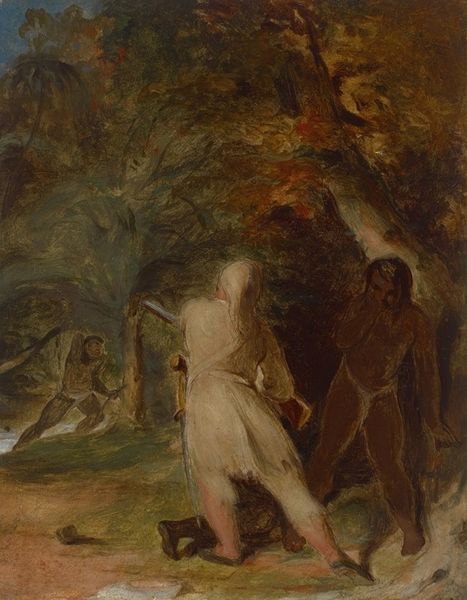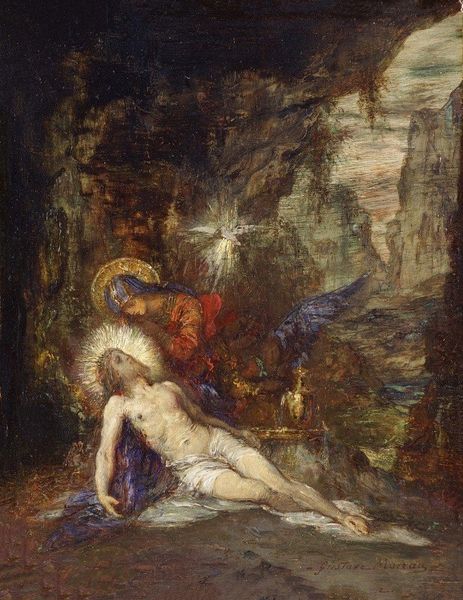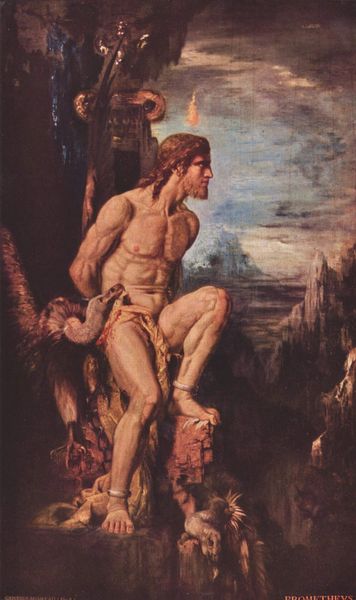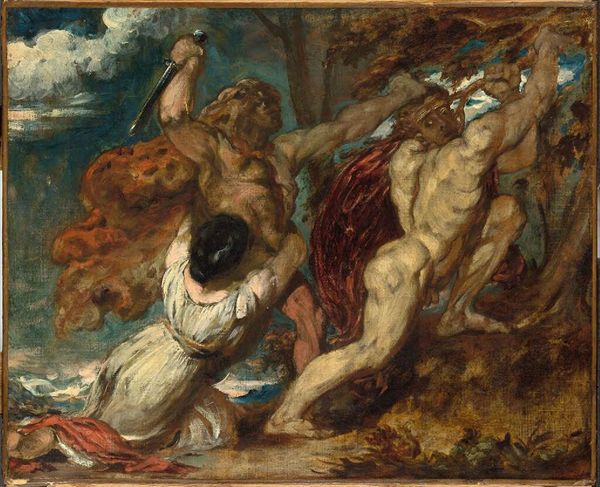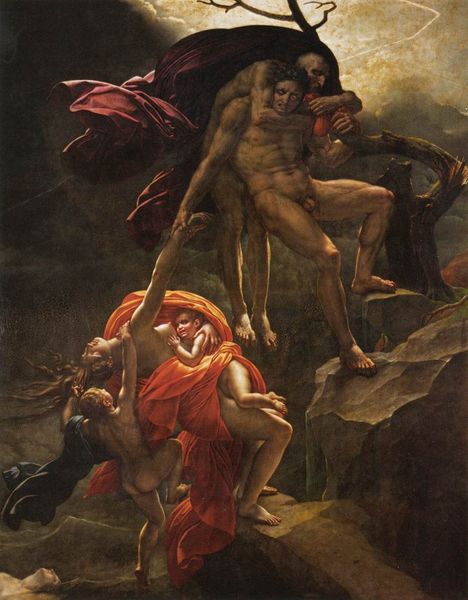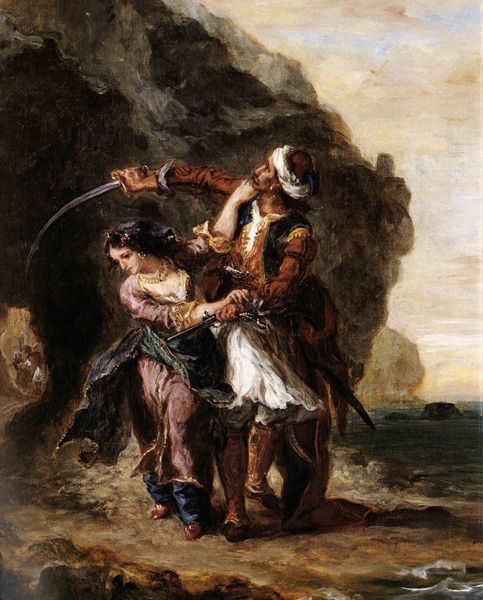
painting, oil-paint
#
painting
#
oil-paint
#
landscape
#
figuration
#
oil painting
#
roman-mythology
#
mythology
#
symbolism
#
history-painting
#
nude
Copyright: Public domain
Gustave Moreau painted this piece, "The Sphinx Defeated," in the late 19th century, a period marked by significant social and cultural transformations in France. Moreau, situated within the Symbolist movement, often drew upon mythology and biblical themes, reinterpreting them through a modern lens. Here, we see Oedipus standing triumphant over the defeated Sphinx, bodies of the Sphinx's victims are scattered around him. In many ways, it’s a story about gender, and the monstrous-feminine. The sphinx, a hybrid creature is often represented as female. She is punished for stumping men with riddles they cannot solve. Moreau creates a space to confront the male gaze, the power dynamics inherent in knowledge, and the fear of the unknown. He highlights how societal norms and power structures can demonize the unfamiliar. Ultimately, this painting speaks to the emotional weight of overcoming personal trials, and the complex ways in which society defines heroism and monstrosity.
Comments
No comments
Be the first to comment and join the conversation on the ultimate creative platform.

